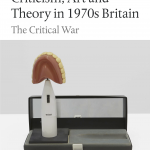Transcript of a talk on the return of magic and mysticism in art and culture, as part of a discussion at Ujazdowski Castle, Centre for Contemporary Art, Warsaw, 17 March 2022
The sacred and the profane have for long been aspects of the arts in the period of modernity. Profanity was, to start with, an attack on orthodoxy; in Europe of the late 19th and early 20th century, this was often in response to the power of the Catholic church; from the Symbolists through to the Dadaists and Surrealists, mocking and attacking the church was a rejection of the moral authority of organised religion, and its complicity with state power.
Artists, then, flirt with the profane as posture of defiance to the restrictive moral norms of their society at a given time. But it’s also true that they do genuinely invest themselves in the mystical and the sacred. And this is particularly the case as artists become increasingly disenchanted with modernity and the modern world. So I want to focus my comments on this question of the trouble with modernity, what I would call the disenchantment with the modern world, and the loss of confidence in the intellectual and social values which have defined it.
During the 20th century, we can see how this disenchantment grew, at the edges of Western culture, through the adoption of both invented or rediscovered occultism, and the borrowing of non-Western spiritualism of all kinds. Think of the neo-paganist ‘religion’ of Aleister Crowley; the adoption by the Bauhaus teacher Johannes Itten of Zoraostrianism; the influence of Zen Buddhism on John Cage; of how Allen Ginsberg, the figurehead of the ‘beat’ generation, turned to Hare Krishna, and how the Beatles got into the unorthodox Hindu sect of the Maharishi and his Transcendental Meditation. Joseph Beuys took on the symbolic mantle of the Shaman. Vienna Actionist Herman Nitsch created the ‘Orgies Mysteries Theatre’, full of purgative ritual and blood sacrifice. Even conceptual artist Sol Le Witt, in his ‘Sentences on Conceptual Art’ begins by saying that ‘Conceptual Artists are mystics rather than rationalists. They leap to conclusions that logic cannot reach.’
The counterculture of the 1960s sent out all these heterodox seeds of spiritual and quasi-spiritual alternatives to the modern Western outlook, and in the last fifty years have seen all these make their way into everyday culture. If, like me, you grew up in provincial England during the late 1980s, you found that your friends were into ‘New Age’; crystals, dreamcatchers, psychedelic drugs, cannabis, vegetarianism and Yoga. Everyone does Yoga now; even rock singer Nick Cave does Transcendental Meditation. Try googling ‘Meditation for Ukraine’ and You’ll find many groups organising group meditation to bring peace and healing in a war zone.
Contemporary art hasn’t always had such a keen interest in the mystical and the sacred, certainly during the more deconstructive and sceptical ‘post-modernism’ 1980s and 90s, where spiritualism, religion and occultism, all the baggage of the hippie era tended to be seen as naïve expressions of a Westerner’s desire for an unattainable authentic existence. At least those early post-modernists had some critical engagement with the desire for the authentic, original human, the pre-lapsarian Eden of humanity before modernity. But in the popular culture, these countercultural legacies continued to thrive as people have turned increasingly to alternative ways of living and being, faced with the dreary reality of a capitalism for which there seem to be no alternatives.
But in recent years, the figures of the shaman and the witch, and occult practices and magic have found their way into contemporary artistic practice. An artist I encountered early in the 2000s, the English artist Marcus Coates, deliberately trained himself in Shamanic ritual, as part of his holistic ecological worldview. I was never sure whether Marcus really believed what he was doing – he certainly was very serious about it. It seemed at the time incredible that an artist who had come from the secular, atheistic world of art would be so unambiguous in his commitment what I thought of as a form of magical superstition. Certainly, in the critical and materialistic artworld thinking of the early 2000s, there was little room for such work.
But I would argue that over the last decade or so, such occult motifs have become more credible and popular within the art institution of art schools and art theory, because they relate to a number of important trends in academic theory: to a certain extent, the figure of the witch has been revived by contemporary ‘fourth wave’ feminists as a sort of critical rejection of patriarchal, heterosexual culture, as well as authentic form of empowerment; and from a different angle, the politics of indigeneity and the knowledge of indigenous people has become increasingly significant in post-colonial discourses.
We might understand these as part of the latest phase in the disenchantment of Western culture that has been going on in earnest since the end of the 1960s. That disenchantment is both cultural and political. Today, we’ve largely given up a politics of collective action that was about reshaping society for our own interests. Of course, political activists still talk of change, but in many ways this is about changing us than it is about changing society. And what we mean by us is the Western-created, rationalist, materialist, acquisitive, colonising, modern subject. When we think of the narratives that dominate our visions of the future, they are mostly of catastrophe, usually ecological. But what is embedded in these visions of catastrophe is our acceptance, as a culture, that it is us – our industrial, materialist, consumerist, capitalist society – that is the problem.
Inside that criticism of modern industrial life is a suspicion that our way of being – our form of subjectivity – is itself the product of this supposedly destructive social form. The Beatniks and Hippies of the counterculture once saw the Eastern spiritual traditions as a way to ‘get out of your head’, which is to say, to find a different form of consciousness, or even a transcendent consciousness that did not rely on technology, industry and materialism of the West. In similar way, neo-pagans in the West sought out cultural traditions that pre-dated the modern age, seeing human life as intertwined with nature and the natural order.
But in the wake of the counterculture came the intellectual attack on some of the foundational concepts on which the culture of the Enlightenment, and modern society has been based. Ideas about humans as a rational, active beings; of scientific knowledge and of speculative reason; and the idea of progress in human history, which could be defined by human society’s capacity to determine its own social organisation and its own destiny. But in recent years many of these traditions have come under attack in the intellectual culture of the modern world. The idea that society can be governed and determined by free-willing subjects has been dismissed as a fantasy, while the belief that there should be one ‘truth’, or that we can say for sure what constitutes social progress, have been dismissed as Eurocentric fantasies of domination. Just to give a brief example of how far this self-doubt has advanced in the academy, last year a group of academics at the University of Auckland published an open letter to oppose the policy that Maori beliefs should be taught as part of the orthodox science curriculum, disputing that indigenous knowledge should be set on an equal level as scientific knowledge. Rather than be supported by their fellow academics, they were denounced and shouted down by their peers, with one of the most common criticisms being that ‘western’ science was inherently ‘colonising’.
What I want to suggest is that in the last 20 or 30 years, the ideas that underpinned modern society in philosophical and political terms have almost completely disintegrated, leaving other ideas which once existed at the margins to move to the centre. By modern societies I don’t mean just Western societies, of course, but the societies that have emerged out of that long period of modernity that started in the West – industrial, immensely productive, technologically sophisticated societies that have flourished all around the world, raising people out of the most brutal poverty, extending life, health and liberty. But that model of the modern society is now experiencing a profound loss of faith in itself, a kind of moral exhaustion in which it sees itself as the problem. Instead, our societies tend to see themselves as destructive and unsustainable. No contemporary society I can see, anywhere around the world, seems particularly happy with itself at the moment. And one of the products of that malaise is a turn to esoteric forms of knowledge everywhere, which aren’t really forms of knowledge, but forms of superstition and incantatory belief; that’s why we see the turn to esoterism in the rise of conspiracy theory culture and paranoid thinking, in QAnon and elsewhere, often marked the desire to return to more authentic modes of being and perception. It’s not at all surprising that the most famous image of the Capitol Hill riots was of the ‘QAnon shaman’ – even if this caused anger among those in the neo-Pagan community who saw this as a travesty of their identity. It’s also why many commentators have been unable to grasp why supposedly ‘progressive’ alternative cultures, such as the wellness movement, have apparently been drawn into the supposedly ‘right-wing’ world of anti-vaxxers and anti-lockdown protestors.
The cultural outcome of this is that if ideas of reason, rational action, science and progress are finished, and if the human culture and consciousness formed by those ideas is dangerous and destructive, then the only alternative can only be return to the pre-modern. This is, for me, the cultural driver for the current revival of the sacred and the mystical in art. The ideas of the counterculture, which lived at the edges of mainstream Western culture for decades, have finally taken over. Magic replaces science, belief replaces knowledge, ritual replaces rational action. And at the same time, the idea of the distinctly human subject, a being which is qualitatively different in its capacity and potential from the rest of nature, is dismissed as hubris – the current fashion is to talk of how we are ‘intertwined’ with ‘non-human entities’ who have as much agency as we humans do, and who have their own forms of knowledge, their own form of consciousness, and so on. We are not human subjects any more, but rather objects, much like any other, the product of networks and forces of nature we have little capacity to influence.
We can see how the critique of ‘anthropocentrism’ of recent years is really a critique of a human subject and society that puts itself above nature, and which seek to shape and modify nature for its own ends. Those forms of consciousness which seek to ‘be at one’ with the natural order are now more culturally acceptable that this anthropocentric view of human beings. Think of the kind of Hollywood mysticism found in James Cameron’s 2009 movie Avatar – the colonising, technologically driven, acquisitive, warlike humans are faced with an indigenous (alien) culture which is psychically connected to the planet it inhabits. This vision was already acceptable in 2009, now it has become a kind of orthodoxy.
We can see that this view of a dominating, expansive society is one which is however exhausted of any meaning. Why do we continue like this? Our contemporary moment seems to have no answer to this. It has run out of a sense of its own purpose, it has run out of energy. In this moment artists, just like the rest of us, turn to forms of enchantment to put meaning back into the terminus of our modernity.



